Maintenance for the week of November 3:
• NA megaservers for maintenance – November 3, 4:00AM EST (9:00 UTC) - 12:00PM EST (17:00 UTC)
• EU megaservers for maintenance – November 3, 9:00 UTC (4:00AM EST) - 17:00 UTC (12:00PM EST)
• ESO Store and Account System for maintenance – November 3, 4:00AM EST (9:00 UTC) - 12:00PM EST (17:00 UTC)
• https://forums.elderscrollsonline.com/en/discussion/684716
• NA megaservers for maintenance – November 3, 4:00AM EST (9:00 UTC) - 12:00PM EST (17:00 UTC)
• EU megaservers for maintenance – November 3, 9:00 UTC (4:00AM EST) - 17:00 UTC (12:00PM EST)
• ESO Store and Account System for maintenance – November 3, 4:00AM EST (9:00 UTC) - 12:00PM EST (17:00 UTC)
• https://forums.elderscrollsonline.com/en/discussion/684716
Daedric Titan vs Dragon
Iccotak
✭✭✭✭✭
✭✭✭✭
✭✭✭✭
Since Daedric Titans are based on a Dragon (and could be seen as Elder Scrolls way of having a Dragon with 6 limbs) I would like to see a face off between a Titan and a Dragon sometime this season.
Maybe a texture update for Titans someday
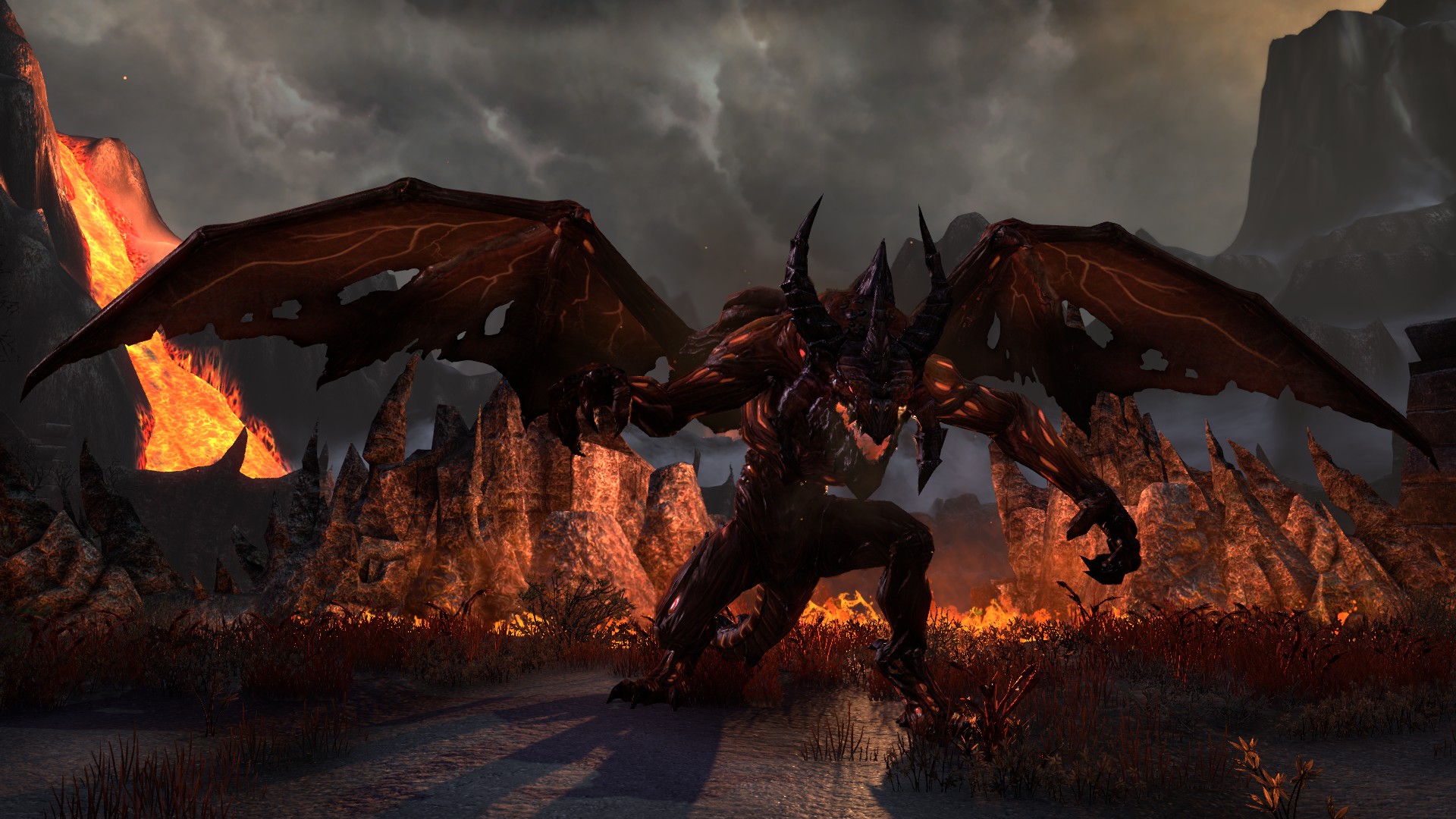

this hypothetical situation doesn't come so much from a mechanics perspective (i.e. which one is harder in gameplay) but more from a lore perspective (i.e. wouldn't it be cool to see them fight)

Edited by Iccotak on April 10, 2019 3:07PM Maybe a texture update for Titans someday


this hypothetical situation doesn't come so much from a mechanics perspective (i.e. which one is harder in gameplay) but more from a lore perspective (i.e. wouldn't it be cool to see them fight)

5
-
Minyassa✭✭✭✭✭
✭✭✭✭I'm thinking probably a dragon could beat up a daedric titan, just because my characters have beaten up titans before and I can't picture them taking down a dragon solo. But then there are probably some big scary titans I haven't encountered, so I also want to see this showdown!0 -
StormeReigns✭✭✭✭✭
✭✭I would say, Dragons would win. Easily 1v1. Due to them having access to all ancient and current magics, knowledge of past cultures, wars and tactical combat and adaptation and growth of their own personality. While the Daedric Titans seem to have a limited fraction of power bestowed upon them by their daedric princes and seem more like shock troops, destructive en-masse, where a large group very in sizes could probably take down a dragon, if they have actual combat knowledge and not just burn / destroy what is in front of them, then they might have a chance, if not, burnt to a crisp as well.2 -
MLGProPlayer✭✭✭✭✭
✭✭✭✭✭Dragons are considerably stronger. Titans are just powerful daedric servants, but they can ultimately be killed fairly easily by mortals (you kill a bunch of them in your adventures without any special aids). Dragons are more akin to gods.Edited by MLGProPlayer on April 1, 2019 8:15AM4 -
starkerealm✭✭✭✭✭
✭✭✭✭✭MLGProPlayer wrote: »Dragons are considerably stronger. Titans are just powerful daedric servants, but they can ultimately be killed fairly easily by mortals (you kill a bunch of them in your adventures without any special aids). Dragons are more akin to gods.
Aedric constructs, as I recall. Though that might be post-Bethesda Kirkbride, I can't remember.2 -
Undefwun✭✭✭✭✭just a note by... that group in the dragon pic def a group finder pug..
No real tank.. .3 DPS and a [removed baiting comment] bow user doing god knows what... that arrow is going no where near that dragon haha
Edited by ZOS_JesC on April 1, 2019 5:04PMDrank Sinatra Sr - PvP Magblade - DC
Juggathot - PvP Mag Sorc - DC
Jedi Mind Crits - PvP A-Hole Bowblade - DC
Dollar Store Thor - PvP Stamplar - DC
The Bone Sumpremacy - baby Stamcro - DC
Wârden Freeman - PvP Stamden - DC (on hold)
Lauryn Heal - PvE Magplar DPS - DC
Lil Orc Chop - PvP Stam Sorc - EP
Hamuel L Jackson - PvE DPS & PvP Stam DK - EP
Chandler Bling - PvP Magden - EP
Mahalia Lightborn - exiled crafting toon - cos you know, she's AD0 -
Iccotak✭✭✭✭✭
✭✭✭✭MLGProPlayer wrote: »Dragons are considerably stronger. Titans are just powerful daedric servants, but they can ultimately be killed fairly easily by mortals (you kill a bunch of them in your adventures without any special aids). Dragons are more akin to gods.
Without any aids?
First time you fight one you are with the five companions
In the final quest hen you have been empowered by greater powers you take on a bunch of Daedric Titans before facing Molag Bal.
Any overland encounters are world bosses that involve Dark Anchors and are very much group fights0 -
Iccotak✭✭✭✭✭
✭✭✭✭It would be cool if they took a page from Elsweyr and had Daedric Titans flying around the base game zones as another form of world eventEdited by Iccotak on April 10, 2019 6:39AM1 -
mocap✭✭✭✭✭
✭kinda weird comparison about kills. Yes, you kill ESO titans fast as well as Alduin (Skyrim final boss) in oneshot on legendary difficulty. So what?
Ash Titan, Bogdan the Nightflame, Iskra the Omen - definitely strong ones. And sure as hell you can't one shot them.0 -
Hymzir✭✭✭✭✭
✭
When I see something like that, all I can see is an overgrown chicken flapping about...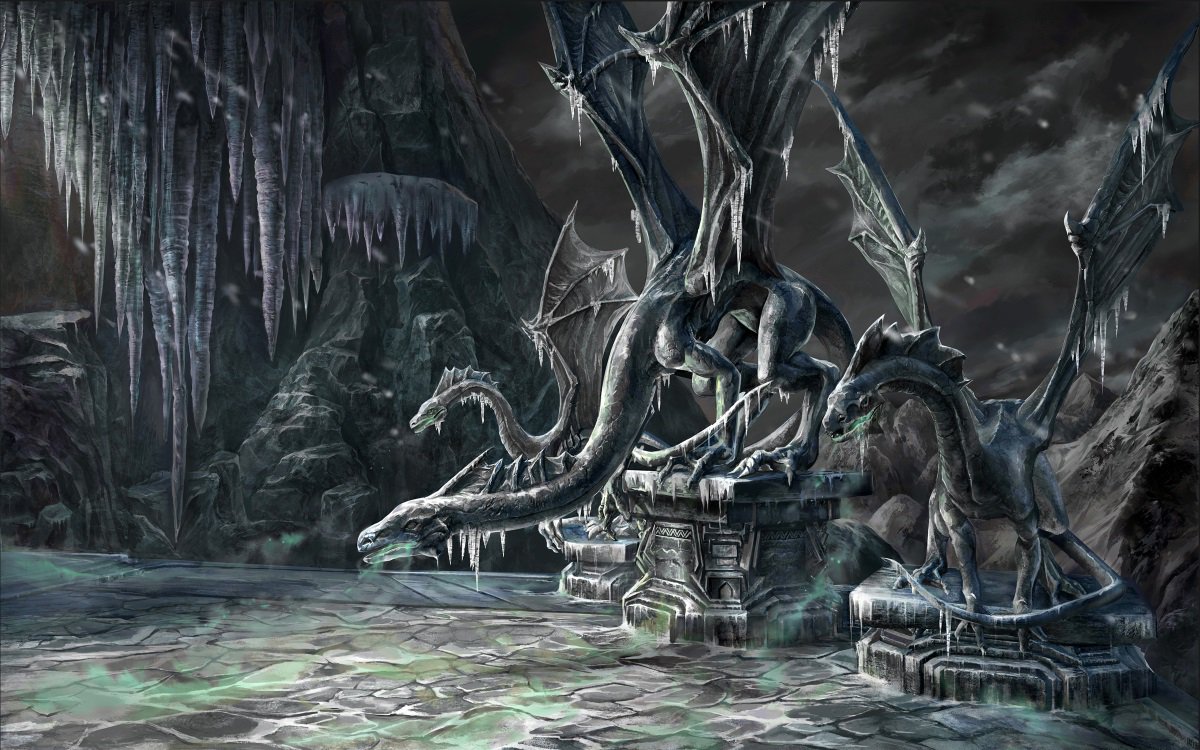
When I see something like that, I see dragons...
I'm quite fed up with this current fixation on "realistic" dragons that only have four limbs, because reasons. We are talking about a 100 foot long fire breathing lizard that can fly despite it's ludicrous weight and tiny wings.
I mean, no one seems to have trouble suspending their disbelief about all that, but as soon as you have 6 limbs on the critter people go: "Unrealistic, not plausible! No real life lizard has 6 limbs!"
Well, get over it! The classical European dragon iconography dictates that they have 6 limbs. People have been depicting them for centuries that way. If you enjoy these modern bat like beasts, then good for you, but how about some good old classical dragon designs for a change?
I was disappointed when the Potter Movies went with wyverns, I detested the lizard-bats of Skyrim, and was let down by the GoT buzzards too. But when the Hobbit movies went with a four limb design, when it is acutely stated in the book that Smaug had 6 limbs, and Tolkien himself drew pictures of Smaug clearly showing 6 limbs, I got truly sick and tired of this trend. And that's all it really is. A trend. A popular opinion currently held. Having four limbs instead of six does not make them better or more believable, it just makes them follow modern design trends.
In Elder Scrolls, there has been depictions for both 4 and 6 limbed designs in the past. But the thing is, that each Elder Scroll game really is a separate thing. The games have never really paid much heed to what has been established before, each being it's own thing, with it's own aesthetics and design goals, and the devs have been quite happy to retcon stuff to fit their plans. When the popular opinion swings towards classical designs once more, I would not be surprised if Elder Scroll dragons started prancing about on 6 limbs.
In the meanwhile, I can live with the wyvern designs, just don't expect me to be the least bit excited about anything pertaining to them.2 -
Iccotak✭✭✭✭✭
✭✭✭✭@Hymzir
Wyverns and Dragons in Mythology are, for the most part, interchangeable.
There are myths have dragons with no wings, 6 legs, and an armored shell. It really is up to the creators of a fictional universe how they want to create their own interpretation.
Tolkein and D&D really popularized 6 limbs
It wasn't until 3rd edition of D&D that artists created Dragons with a believable muscle structure that supported 6 limbs
In Elder Scrolls Dragons that were seen in the actual game had four limbs, as you can as early as Elder Scrolls: Redguard.
It was a mystery what dragons looked like to the residents of the ES universe because they hadn't been seen for a long time.
Peryite created his own depiction as a 6-limbed dragon in order to make himself look mighty.
I like that Elder Scrolls found a creative reason to have both exist within the same universe.
There is the Aedric creation that we know as "Dragons" and then there is the Daedric twisted version of them.
It plays off how certain religions considered Dragons and Demons one and the same, while other cultures considered Dragons to be divine beings.Edited by Iccotak on April 10, 2019 9:42AM2 -
Fellwitch✭✭✭@Hymzir
Wyverns and Dragons in Mythology are, for the most part, interchangeable.
There are myths have dragons with no wings, 6 legs, and an armored shell. It really is up to the creators of a fictional universe how they want to create their own interpretation.
Tolkein and D&D really popularized 6 limbs
It wasn't until 3rd edition of D&D that artists created Dragons with a believable muscle structure that supported 6 limbs
In Elder Scrolls Dragons that were seen in the actual game had four limbs, as you can as early as Elder Scrolls: Redguard.
It was a mystery what dragons looked like to the residents of the ES universe because they hadn't been seen for a long time.
Peryite created his own depiction as a 6-limbed dragon in order to make himself look mighty.
I like that Elder Scrolls found a way to have both exist within the same universe and have a creative reason as to why that is.
There is the Aedric creation that we know as "Dragons" and then there is the Daedric twisted version of them.
It plays off how certain religions considered Dragons and Demons one and the same, while other cultures considered Dragons to be divine beings.
The dragon that Siegfried fought against had I believe four limbs and no wings.
Siegfried hid in a trench in the ground and as the dragon walked over it, he stuck his sword in the worm's belly and blood covered his whole body (except for a certain patch on his back...), which made him invunlerable.
This dragon would have been fought in maybe 1100-1200 AD I think. Then again, I don't recall it ever being addressed as a dragon and instead usually as a Worm.
What is funny is if you go to Worms (Germany) though, there are statues of little dragons with wings on them (but they are all cute ones).
2 -
Hymzir✭✭✭✭✭
✭@Hymzir
Wyverns and Dragons in Mythology are, for the most part, interchangeable.
No, they're not. Wyverns are an ofshoot of the dragon concept that has developed it's own identity. There are bunch of classical dragon designs and stories floating about, that sport a critter that resembles what we would classify, based on it's appearance, as a wyvern these days. However, they're still called a dragons, because a dragon is a dragon no matter what it looks like. And when you want to use a wyvern, you are using it because you do not want to use a dragon. So no, they're not interchangeable. They share similar design traits, but a wyvern is it's own thing.
If you look at it from a historic perspective, then dragons aren't even lizards to begin with, they actually derive from a fantastic and monstrous re-imagining of snakes. They derive from monstrous serpents, which lead to them being called wyrms, and is apparently why, in some regions of Europe, dragons are referred to as worms.
It took centuries of re-telling of old stories, and re-imagining the beasts involved, for the "classical" dragon form to emerge. And along the way it sometimes had feathers, and the number of legs involved varied, and the presence of wings was optional, depending on the whims of each teller of the tales. But eventually the design did more or less coalesce into what one can call the classical European dragon. And wyverns broke of form that notion somewhere along the way, and got codified in the process, as it became a heraldic emblem of it's own, distinct form the dragon. And a key thing about them is, that they pretty much never have more than 4 limbs, and they don't breathe fire.There are myths have dragons with no wings, 6 legs, and an armored shell. It really is up to the creators of a fictional universe how they want to create their own interpretation.
Which was exactly my point - these are design choices. Nothing more, nothing less. But even so, among these various depictions of dragons, the classical one, the one with most traction, is the one with 6 limbs. But for the past 15 years or so, the notion of a 4 limbed dragon has become more popular. And a common justification people give for for this modern trend is, that people apparently find them more "realistic" and "believable." But I do not subscribe to that notion. Which was my point, not the shape and form dragons have been depicted in Elder Scroll games. In the end, they're both equally silly and farfetched, but given the choice, I go with 6 limbed ones, 'cause I find them cooler and much more majestic, and the ones I prefer to have in a medieval fantasy setting.
Which is not true at all. D&D and Tolkien made fantasy a more mainstream thing - the 6 limbed dragons have been there for centuries. And yes, they have existed in our imaginations along with the with 4 limbed, and wingless versions of dragons during all that time. However, if one tries to come up with some sort of consensus, as to what a typical, classical, European dragon looks like, then that thing has four legs and a pair of wings. And they are all over Europe, in statues and carvings and paintings and even flags.Tolkein and D&D really popularized 6 limbs
It wasn't until 3rd edition of D&D that artists created Dragons with a believable muscle structure that supported 6 limbs
Sure, the other varieties are also out there (though some of them are actually wyverns, 'cause they are their own heraldic thing, with it's own heraldic connotations) , but even without having done an exhaustive study on the distribution of these things myself, I'm pretty much willing to wager that the 6 limbed one will come out on top.
So, if some author or artist wants to go with the 4 limbed version, they're perfectly free to do so. But please, don't try to pretend that that design choice makes their rendition of dragons more "realistic", or that there isn't a tradition favoring 6 limbed designs. I prefer the classical, version and truly detest it when a movie like The Hobbit decides to go with the 4 limbed version simply because it's a more modern interpretation, even though the source material makes it abundantly clear that Smaug had 6 limbs!
As for Elder Scrolls go, I am quite aware that in Elder Scroll games dragons traditionally follow 4 limbed design. But even so, there are places where the 6 limbed version has popped up, and all the lore explanations behind these occurrences, sound to me like an afterthought explanations to cover up discrepancies between different designers take on dragons.
Personally, I don't really care one way or another how the dragons in Elder Scroll look. I am not invested in the lore of the series enough to care. If they keep using 4 limbed ones, then it's fine with me. If they switch to some other design, I'll be cool with that too. All am just saying is that I do not find the 4 limbed version cool, and found the bat like movements of the Skyrim dragons silly. Again, if you like them, then good for you, but I do not, and thus the fact of dragons coming to ESO is pretty much a ***-hum thing as far as I'm concerned, and the dragon in the first pic i commented on, looks more like an angry chicken than a ferocious dragon. Mileage will wary, of course, based on personal opinion.Edited by Hymzir on April 10, 2019 11:17AM1 -
Iccotak✭✭✭✭✭
✭✭✭✭@Hymzir
Wyverns are very similar to dragons, and in many languages, cultures and contexts no clear distinction is made between the two. Since the sixteenth century, in English, Scottish, and Irish heraldry, the key difference has been that a wyvern has two legs, whereas a dragon has four. However, this distinction is not commonly observed in the heraldry of other European countries, where two-legged dragon-like creatures being called dragons is entirely acceptable.
in terms of popculture media
When I say 'Tolkein and D&D popularized it' I mean they made the what you call the "Classical European Dragon" the mainstream pop-culture standard for many people.
4 limbed dragons have actually been popular in media for a very long time dating back to the classic 1981 film "Dragonslayer" and even farther back
Yes, depictions of 6 limbed dragons have been around for centuries in statues, carvings, paintings as well as flags.
However, 4 limbed dragons have been as well. A wyvern is just a kind of dragon.
There is even an old illustration of Saint George killing a Dragon with 4 limbs
Dragons were/are called by names such as Wyrm, which is a term that essentially means a large snake.
Venomous Snake is also the root meaning of the word Wyvern.
There will never be a consensus as to what the standard European Dragon is because many countries throughout Europe have very different depictions of Dragons.
Actually my preference for 4 limbed dragons has less to do with realism and more to do with that I prefer that look.So, if some author or artist wants to go with the 4 limbed version, they're perfectly free to do so. But please, don't try to pretend that that design choice makes their rendition of dragons more "realistic", or that there isn't a tradition favoring 6 limbed designs.
I don't make the realism argument for three reasons
1. Dragons are supposed to be fantastical beasts that are out of the ordinary
2. I prefer it when Dragons can talk
3. I prefer Gryphons with 6 limbs
When it comes to Smaug, I believe that creative decision was done to fit better with the actor's motion capture performance.
Not because of the popularity of depicting Dragons with 4 limbs.
Now that you mention Dragons with Feathers though...
Could the Argonians have encountered a Dragon thats design is inspired by the Aztec myth of the Quetzalcoatl? That I'd like to see 2
2 -
Iccotak✭✭✭✭✭
✭✭✭✭Speaking of flying Creatures though,
Could we have large gryphons flying around in Summerset that a group of players could take on like Dragons in Elsweyr?0 -
Universe✭✭✭✭✭
✭✭Daedric Titan is no match to a Dragon.
Dragons are extremely powerful in the world of TES.
Maybe 100 Daedric Titans will have a chance against a dragon.Some videos I recorded for fun: Main character:
PC EU main: Universe - AD magicka Sorcerer, Former Emperor, Grand Overlord, The Merciless, Trial Bosses Solo Champion
Top alts: Genius(stamina/sagicka Dragonknight) The Force(stamina Nightblade) and other chars.
PC NA main: The Magic - AD magicka Sorcerer
Started playing ESO in beta & early access
User_ID: Daedric_Prince0 -
Iccotak✭✭✭✭✭
✭✭✭✭Daedric Titan is no match to a Dragon.
Dragons are extremely powerful in the world of TES.
Maybe 100 Daedric Titans will have a chance against a dragon.
That would be cool to see
I hope we do get a bit of dialogue from Dragons commenting on the Abominations and Molag Bal, maybe even mention Peryite1 -
SpacemanSpiff1✭✭✭✭✭
✭✭When I see something like that, I see dragons...
I'm quite fed up with this current fixation on "realistic" dragons that only have four limbs, because reasons. We are talking about a 100 foot long fire breathing lizard that can fly despite it's ludicrous weight and tiny wings.
I mean, no one seems to have trouble suspending their disbelief about all that, but as soon as you have 6 limbs on the critter people go: "Unrealistic, not plausible! No real life lizard has 6 limbs!"
Well, get over it! The classical European dragon iconography dictates that they have 6 limbs. People have been depicting them for centuries that way. If you enjoy these modern bat like beasts, then good for you, but how about some good old classical dragon designs for a change?
Dragons are fiction. There are no set rules that everyone needs to follow. ES dragons have their own lore and 'rules'. Just like ES vampires have their own lore and 'rules'. You get over it.4 -
Kombinator✭✭✭Dragons are later content so bound to be stronger.
But we could assume, that we get different strength in both case. But the dragons are Aedric creations, and the Daedra are stronger. We can assume, that the daedra can create titans, that can rival or beat any dragon.
As for the game forget it. It's the mechanics. They meant to be beatable. If Skyrim were an old-school RPG were difficulty was important, then Alduin would be a fixed lvl100 super powerful dragon, that needs LOTS of preparation to stand a chance against.
Same for the dungeons. When they came out as fresh, then they were worthy opponents. Even now i heard, that the DLC dungeons are generally harder, than base game ones.0 -
Iccotak✭✭✭✭✭
✭✭✭✭@SpacemanSpiff1
@Hymzir
Have you seen Destiny's Dragons known as the 'Ahamkara'
First one you meet goes by the name Riven
Strange one...

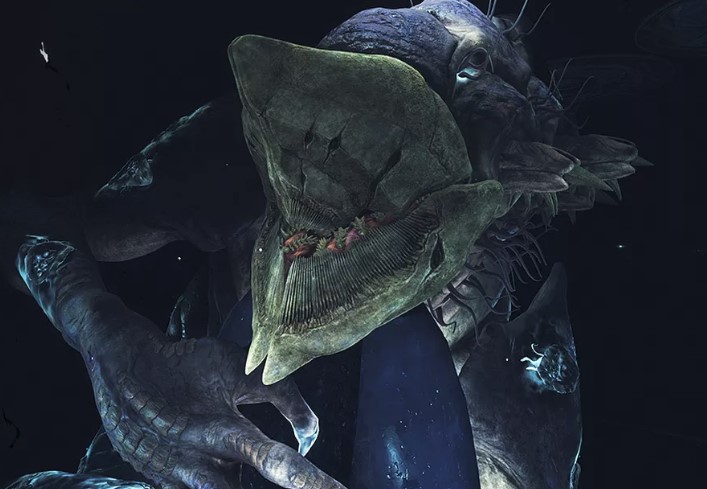

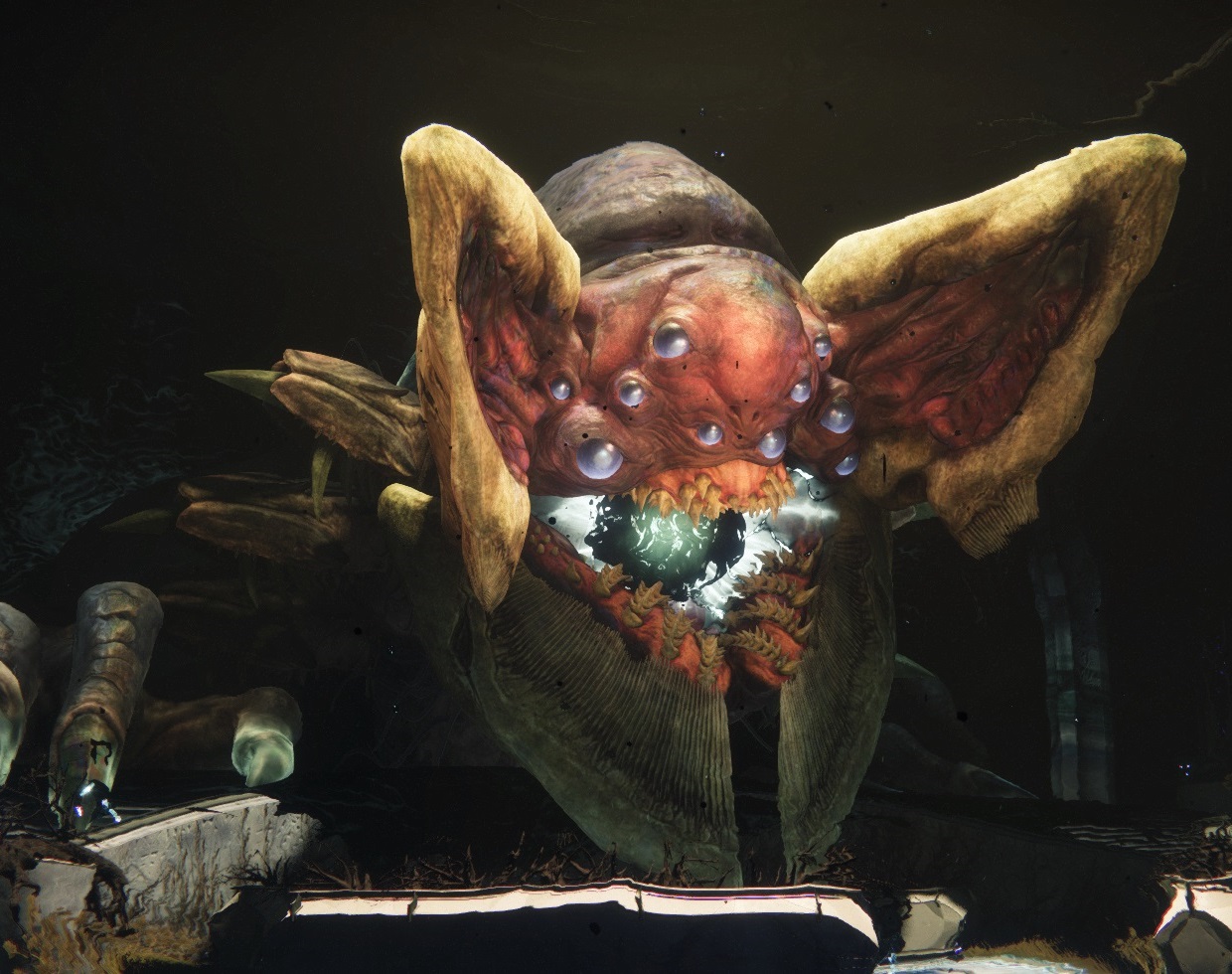 1
1 -
Iccotak✭✭✭✭✭
✭✭✭✭Imagine the Welkynar Knights taking on a Dragon.
although keep in mind Gryphons were bigger in the trial than they are out in the wild
So I do not know that a Welkynar Knight & Gryphon would look like this in the open world.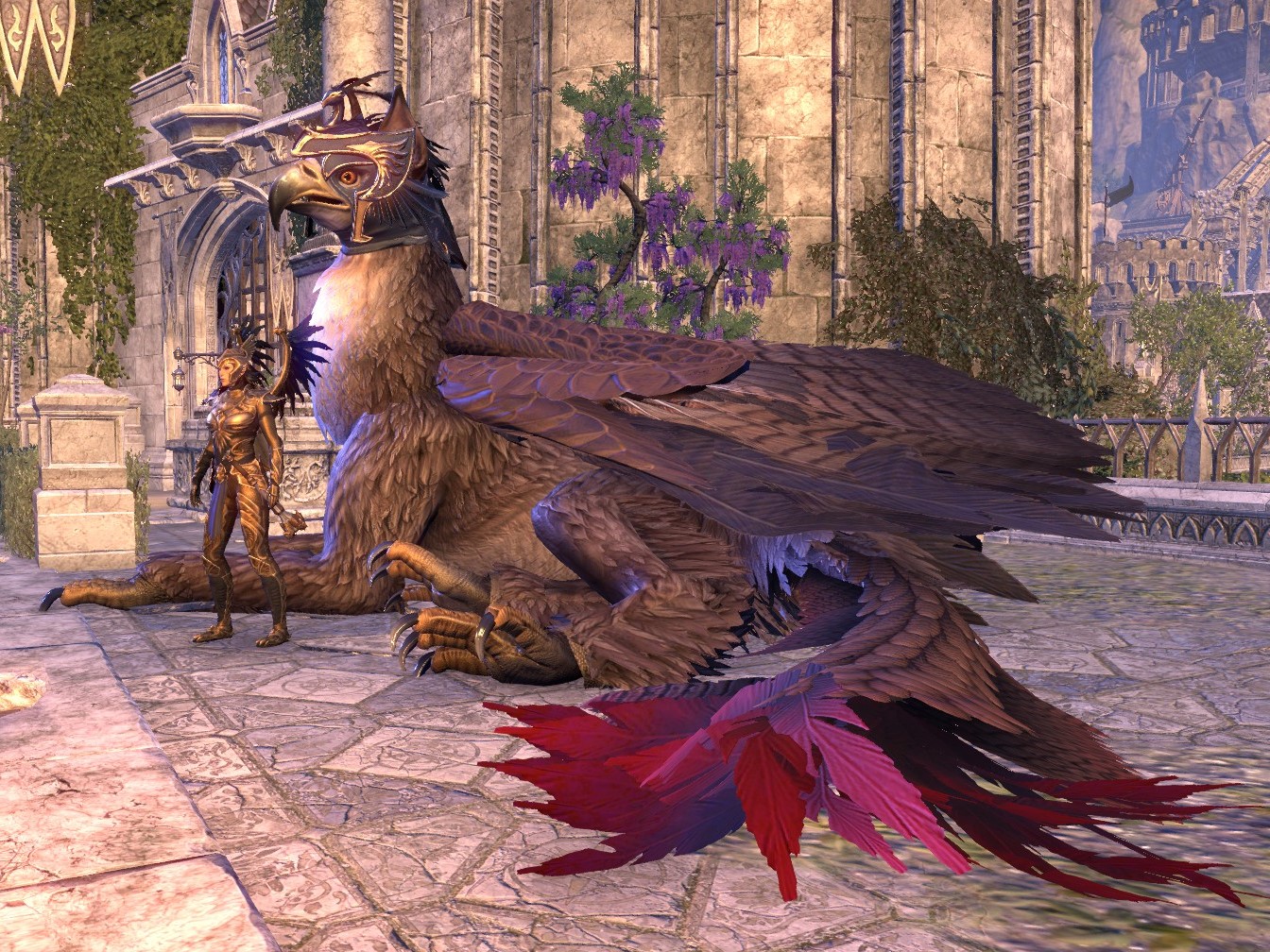
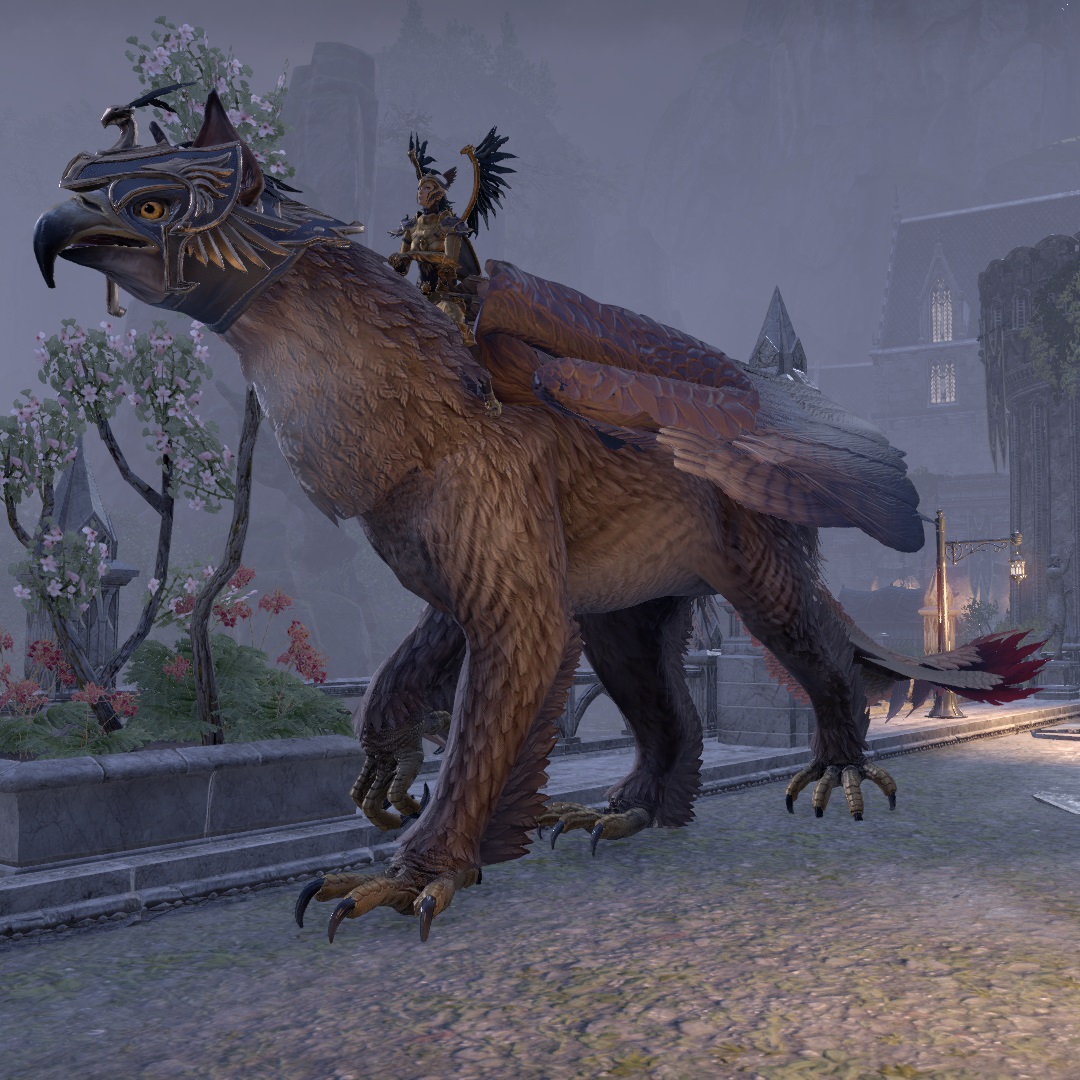 Edited by Iccotak on April 10, 2019 3:17PM0
Edited by Iccotak on April 10, 2019 3:17PM0 -
Hymzir✭✭✭✭✭
✭Wyverns are very similar to dragons, and in many languages, cultures and contexts no clear distinction is made between the two. Since the sixteenth century, in English, Scottish, and Irish heraldry, the key difference has been that a wyvern has two legs, whereas a dragon has four. However, this distinction is not commonly observed in the heraldry of other European countries, where two-legged dragon-like creatures being called dragons is entirely acceptable.
Dude... I don't know what you are trying to prove here, or to whom... And why are you quoting Wikipedia verbatim? Like seriously, that whole paragraph is lifted straight from Wikipedia page for Wyverns talking about the distinction between them and dragons. And all it points out is, that not all countries in Europe subscribe to wyverns. To them, they're just dragons. Wyvern is a separate concept that is mostly British in origin.
Calling Dragonslayer as a part of popular media, is being rather generous. It's a cult movie through and through, unlike say GoT series or Potter movies. And nobody is disputing the existence of dragons that do not subscribe to the standard model, nor the fact that there have always been different interpretations. Hell, one of the earliest known surviving depictions hails from the mid of 13th century, and that thing has 2 pairs of wings on it and 4 legs. Still doesn't change the fact that the the most common is the 6 limbed version. And talking about weird unorthodox dragons, I always liked the ones in Narutaru, but certainly would not want to see them in a medieval fantasy game.in terms of popculture media
When I say 'Tolkein and D&D popularized it' I mean they made the what you call the "Classical European Dragon" the mainstream pop-culture standard for many people.
4 limbed dragons have actually been popular in media for a very long time dating back to the classic 1981 film "Dragonslayer" and even farther back
So what? What does that prove? What does that prove that I haven't said already?There are literally thousands and thousands of interpretations of that scene. In some the dragon has 4 limbs, in others 6. Some versions sport wings, others do not. I've even seen a version where the "dragon" was just a long snake that was snorting flames.Yes, depictions of 6 limbed dragons have been around for centuries in statues, carvings, paintings as well as flags.
However, 4 limbed dragons have been as well. A wyvern is just a kind of dragon.
There is even an old illustration of Saint George killing a Dragon with 4 limbs
The point here is, that they are all dragons. Georgie boy slew a dragon, not a wyvern. Wyvern is a later concept that is a derivative of the dragon, and nowhere near as universal as the dragon. It does not mean a licking thing that some depictions of a dragon are similar to the one people have ascribed to the wyvern. The point is, that a dragon is a dragon and a wyvern is not a dragon. It's a wyvern. I mean, apples are of a roundish shape and grow on trees and are a fruit, right? So obviously oranges are apples, since they too are of a roundish shape, and grow on trees and are a fruit, right? Even the bit from wikipedia you quoted earlier, just points out, that not all places in Europe bother with the notions of wyverns in the first place. That's why they don't call them wyverns. They call them dragons. 'Cause they're dragons.
I don't even really get it, as to why you are so fixated on equating dragons and wyverns as being basically the same thing. Is it because a lot of people call Skyrim dragons as being wyverns and it annoys you? Well I don't call them wyverns, I don't do it, 'cause they're dragons. A fairly lackluster rendition of dragons in my eyes, but it has it's fans, and I'm fine with that. To each their own. So once again, if you like them then GOOD FOR YOU! BE HAPPY! REJOICE!
Just try to accept the fact that not all people find them cool or striking in appearance. And I for one, would've been much happier and interested in Elder Scrolls Dragons, if they looked more like those Peryite critters than the bat-lizard we got. But that's just like, my opinion, man.Dragons were/are called by names such as Wyrm, which is a term that essentially means a large snake.
Venomous Snake is also the root meaning of the word Wyvern.
I know. I've read the wiki page too.
Oh there is consensus alright. Just because you do not participate in the opinion that is the consensus, doesn't change the fact that the consensus is that dragons have four legs and a pair of wings.There will never be a consensus as to what the standard European Dragon is because many countries throughout Europe have very different depictions of Dragons.
The differences are not so much between the traditions of different countries, they are differences of between individual authors and artists. There are varied depictions in each country, and I'd say they vary much more with the time period they hail from, rather than their place of origin. But even so, as the centuries have passed, the one that has become the most common, over Europe as a whole, is the 6 limbed version.
That is why it's called the classical European dragon, and due to that consensus, you get people calling dragons that do not conform to it, as being wyverns. And then we have to go and educate them, that there are alternative renditions of dragons that are just as valid, even if they are not as common.
Though as I noted in earlier posts, currently the 4 limbed version is becoming the more common one, and may even supplant the traditional one at some point. I hope not, since I do not like it. It looks unbalanced and ungainly to my eyes.
Maybe, maybe not. But the fact remains, that Tolkien described Smaug pretty clearly and stated that the beast followed the classical pattern of 4 legs and a pair of wings on the back. Even the original version of the first Hobbit movie showed Smaug as having four legs.When it comes to Smaug, I believe that creative decision was done to fit better with the actor's motion capture performance. Not because of the popularity of depicting Dragons with 4 limbs.
Maybe they did change it for the motion cap. It's as good a theory as any, but even so, they did change it, and then went back and altered the original scenes from Unexpected Journey to fit the 4 limbed design they went with in Desolation of Smaug. No matter the reason, I still detest it, and is the reason I skipped on the movie in theaters. Well, that and the barrel fight nonsense in the first movie kinda made me lose all hope for the trilogy anyway.
But yeah... I really don't have anything else to say about this, except to note that I will never agree on Wyverns and Dragons as being essentially the same thing. 'Cause they're not.SpacemanSpiff1 wrote: »Dragons are fiction. There are no set rules that everyone needs to follow. ES dragons have their own lore and 'rules'. Just like ES vampires have their own lore and 'rules'. You get over it.
Just as with all things, people like different things when it comes to fiction, and there is nothing wrong in voicing those opinions. If you like Elder Scroll dragons, then be happy, but accept the fact that others might have preferred the series to take a different interpretation. It's not like we are talking about horses here. I mean with horses we have real life examples we can use as a benchmark, and note that the ESO horse is fairly odd looking creature, with wrong proportion and weird hind legs.
But we can't do that with dragons, and thus people can easily have different tastes when it comes to these bests. Try to get over the fact that not everyone likes every aspect of Elder Scrolls, and it's perfectly possible to enjoy them, even if you do not like some particular detail or thing in them.@SpacemanSpiff1
@Hymzir
Have you seen Destiny's Dragons known as the 'Ahamkara'
First one you meet goes by the name Riven
Strange one...




No.. No I haven't Don't play Destiny. But I kinda like the first one and the last one. Wouldn't wanna see them in an Elder Scroll game, but yeah. I could go with those kinda dragons too.Edited by Hymzir on April 10, 2019 2:12PM0 -
xxthir13enxx✭✭✭✭✭
✭Heh this a good in depth look into the myths and legends of Dragons vs Skyrim Dragons... https://youtu.be/8huan7xaYeQ 2
https://youtu.be/8huan7xaYeQ 2 -
Iccotak✭✭✭✭✭
✭✭✭✭@Hymzir
My point is just what you said multiple times in your own response.
a "Wyvern" is just another type of Dragon and is just as valid as the popular 6-limbed version that you prefer.
There is no standard for Dragons other than that they are generally large serpents, or serpent like beasts, that may or may not breath fire. They vary drastically throughout all of Europe, due to culture & time period, but the 6 limbed depiction became very popular as time progressed.
There is no impressing happening here, the point of the wiki paste was to show that it is very easy to google this topic and see that Wyverns and Dragons are generally considered the same thing to many individuals and many cultures of Europe as well as throughout the world.
I can continue to quote wikipedia about Wessex which has the famous symbol that is called both "the Golden Wyvern" and "the Golden Dragon", doesn't really matter.
Saint George v. the Dragon is a good example because even though it is the same story, we see the dragon depicted differently in different ancient texts from different cultures. Meaning that Wyvern is just another word for Dragon.
As to your question;
Besides Skyrim, I have seen many people argue about 'Dragons v. Wyverns' of popular media, about which is more valid and/or correct and getting very upset and acting as if there are clear & strict rules as to what defines a dragon. My 2 cents are only pointing out that there isn't.
Unless I have misread your response, I believe you and I mostly agree on that.
You do you, I am just saying my thoughts and that my preference, as well as others, for 4 limbs doesn't necessarily come from a position of realism.2
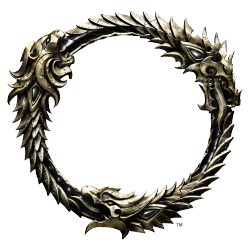
 https://www.youtube.com/watch?v=DHJ-gZUqD2o
https://www.youtube.com/watch?v=DHJ-gZUqD2o